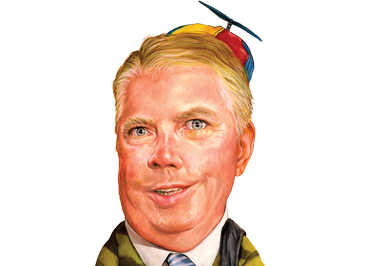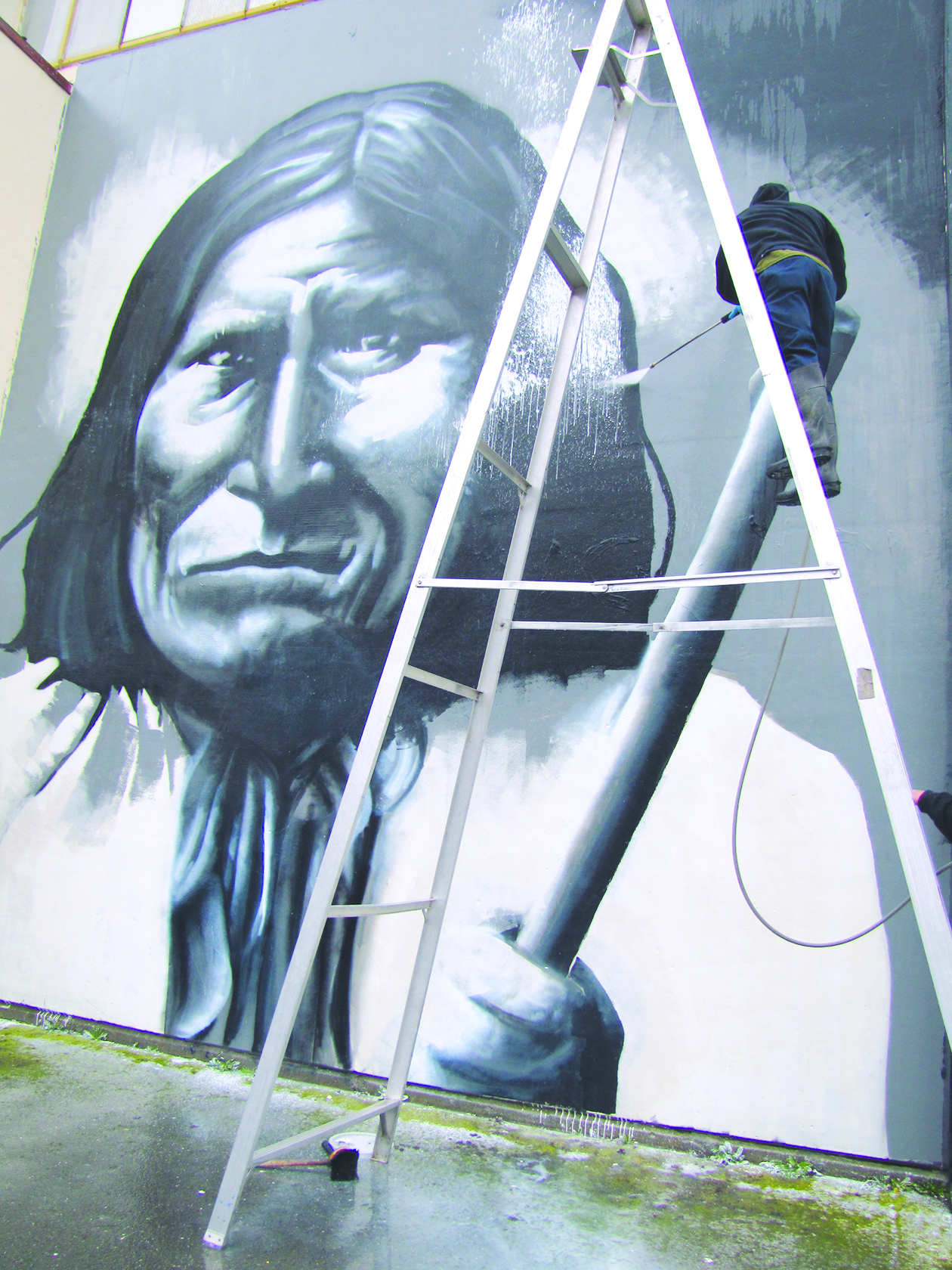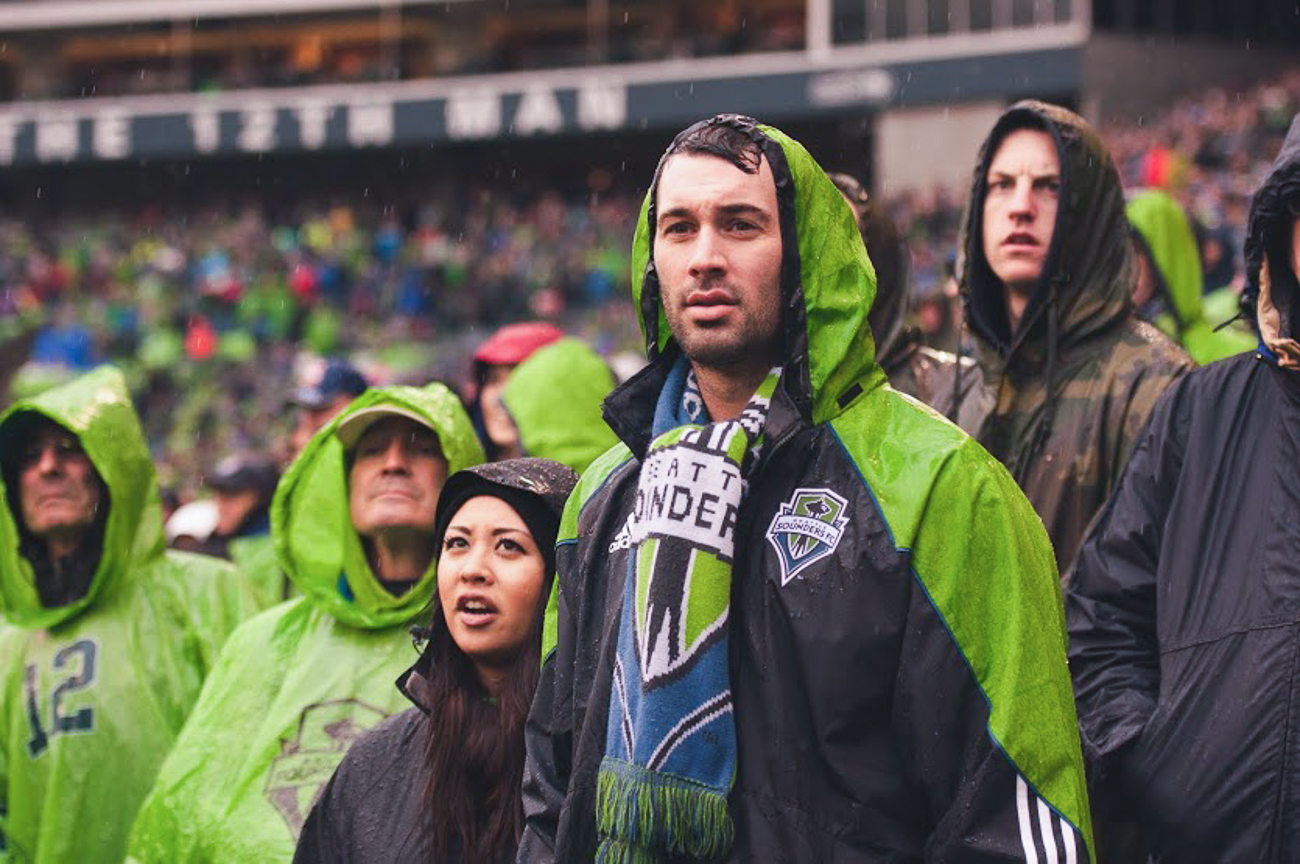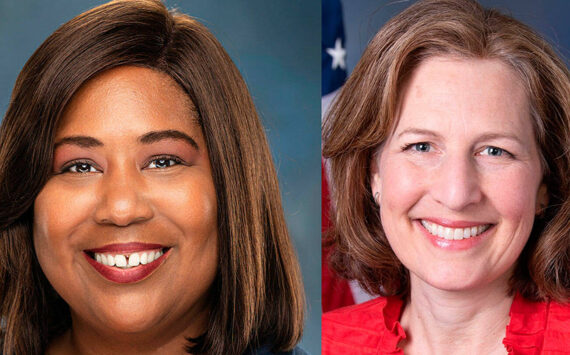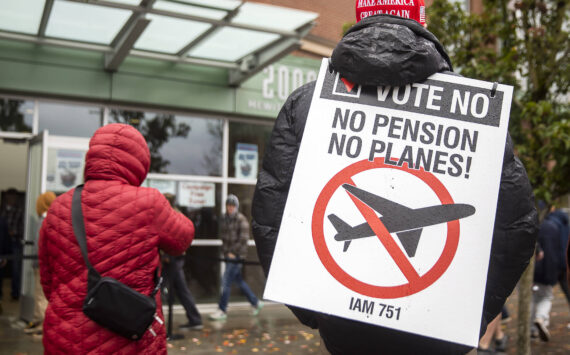Owning up to the mistakes of his first—and as it turned out, only—term in office while on the campaign trail last year, outgoing Mayor Mike McGinn must have said it a hundred times: “There is no mayor’s school.”
He had a point. From the impression he created during his fruitless battle against the tunnel, the City Council he never got along with, the endless bicycle photo-ops that alienated car-loving voters, and the disheveled appearance that defined his early months in office to the embarrassment of last summer’s gun-buyback fiasco, McGinn’s on-the-job blunders were countless and politically costly. Sure, he learned a lot on the job, and finished his term much stronger than he started it, but a remedial course in How to Handle Your City, it seems, would have benefited McGinn greatly.
So what if there was a mayor’s school?
As McGinn’s questionable luck would have it, there actually is a mayor’s school—of course!—an annual three-day course at the Kennedy School at Harvard’s Institute of Politics that was held in early December. More than 20 incoming mayors attended it, and Ed Murray—who takes office Jan. 1—was one. Back in Boston, academic types and policy experts schooled Murray on subjects like making the transition from campaign trail to the office, finance and administration, the economy, and public safety.
Chances are, however, the Kennedy School failed to delve into many of the real-life challenges that face the leader of Seattle—a city that vacillates only in its shades of blue, so well known for its foot-dragging that the term “Seattle process” has become synonymous with painstaking bureaucratic slog. The good news for Murray is that many of these lessons can be learned from Seattle’s past mayors. And we’ve got ’em.
To aid Seattle’s newest leader with his transition, we spoke with four of those ex-mayors (McGinn included), two former deputy mayors, several historians, and at least two curmudgeonly media types to glean advice. The results can be found in the following lessons, which, if followed, just might help Murray avoid his predecessor’s one-term fate. From Henry Yesler’s lottery scandal and Hiram Gill’s troubles with vice to Paul Schell’s PR nightmares and Greg Nickels’ snowstorm, Seattle history is filled with mayoral mistakes and successes.
Take notes, Ed Murray. There’s a lot to learn.
Lesson 1: Sweat the Small Stuff
If Seattle mayors have had one constant enemy over the years, it’s potholes. Just in recent years, they’ve employed pothole rangers, pothole counters, and entire pothole websites to battle them. They’ve dispatched crews to fill potholes in the middle of the night. They’ve proclaimed themselves pothole vigilantes, and launched full-blown pothole wars.
But potholes put up a good fight.
“The last three Seattle mayors have dispensed heaping helpings of urban vision. It beats sweating details on the delivery of city services. But maybe a ‘Mayor Pothole’ is what we need now,” the Seattle P-I ’s Joel Connelly wrote in 2001, before the ouster of one-termer Paul Schell and the election of Greg Nickels.
“At some point, potholes become this enduring symbol of your mayoral prowess,” says Knute Berger, Seattle history enthusiast and former Seattle Weekly editor-in-chief. “If you’re going to mayor’s school, one of the things I’d write on the blackboard is: ‘It’s the potholes, stupid.’ ”
But filling potholes is about more than fixing holes in the road. It’s about a mayor’s image—and whether voters see a mayor getting things done.
“What [keeping up on small stuff like potholes] allows you to do is build up a trust that if you say you’re going to do something, people will trust you to do it,” Nickels says. “The message that you send about those little things is very important.”
While McGinn’s administration filled more than 50,000 potholes during his tenure, the outgoing mayor admits he didn’t realize how important things like road maintenance, drainage issues, and timed traffic lights were until after he took office. He learned quickly.
“Initially, when I came in to office, my feeling was the mayor was supposed to work on big stuff and not little stuff,” says McGinn. “But it turns out if the constituents care about it, it is big stuff.”
Lesson 2: Respect the Power of PR
A former TV newsman, Charley Royer understood the importance of handling the small stuff. He also understood the importance of doing so publicly.
“You can do a lot of little things, but if no one ever hears about them, it’s not going to demonstrate to people [that you’re competent],” he says. Asked for an example, Royer recalls a downed stop sign—and a man who just wouldn’t stop calling about it.
“Finally, I called the guy up,” Royer says. “He was just floored that the mayor was calling him. . . . I told him I’d have a guy out there in a half-hour. The story got around, and we helped the story get around, obviously.
“And this guy kept telling everybody that the mayor kicked some ass and he got his stop sign.”
Tom Byers, who served in the Royer administration and was a deputy mayor under Paul Schell, says a mayor doesn’t need only to get things done, he or she needs to show people what’s been accomplished. Byers knows from experience, and it’s here that the power of public relations comes into play—an arena many say Schell failed in.
Byers sticks up for his former boss, arguing that Schell got “a ton of libraries, parks, and community centers built.” But Byers also concedes that Schell was undone by an inability—or a lack of interest in—communicating his feats to voters.
“Paul, I think, thought if you just got the work done, the rest would take care of itself,” says Byers. “It is an unfortunate reality of politics that it really doesn’t always work like that. . . . He was not a politician that came in with a mind-set of looking after his image. It came back to bite him.”
In a big way. While Schell may well be guilty of failing to tout his legitimate accomplishments, he suffered more for major PR gaffes—none bigger than the aftermath of the fatal Mardi Gras riot of 2001, where police stood on the sidelines on the orders of Schell’s police chief, Gil Kerlikowske, as 20-year-old Kristopher Kime was beaten to death. Later, Schell spokesman Dick Lilly told a radio reporter the mayor had been asleep at the time. It was a stupid move.
“If it wasn’t for Dick Lilly being an absolute [expletive] idiot and volunteering to the press Schell was asleep, I think the political fallout from that would have been a lot less,” the late Blair Butterworth, a famed political strategist, would tell Jim Brunner of The
Seattle Times in 2002.
The fallout was very real. According to Byers, a mayor who’d already seen his approval rating plummet thanks to the 1999 WTO riots was all but crippled by the Mardi Gras meltdown. Most political observers were far from shocked when Schell didn’t make it out of the 2001 primary.
“It was disastrous. [Schell] had no real political operation or no real political brains at the time,” the P-I ’s Joel Connelly tells Seattle Weekly. “The idea that he was slumbering reinforced an impression of a somewhat ineffectual, slightly grumpy sad-sack.”
“We had bad luck in that regard,” Byers says of Schell’s struggles. The truth is, it wasn’t bad luck as much as very bad public relations.
Lesson 3: Expect the Unexpected
HistoryLink staff historian Alan Stein puts it bluntly: “The best lesson learned for any mayor coming in is to expect the unexpected,” he says.
In other words, there’s a good chance your mayoral legacy will be defined at least in part by something you never saw coming. For Murray, that could be whatever’s currently blocking the Highway 99 tunnel dig, growing labor tensions, or even a catastrophic earthquake. We just don’t know.
For Charley Royer, we do: It was the Chavez, a 12,000-ton, 550-foot-long freighter carrying a load of gypsum up the Duwamish in the middle of the night.
In mid-1978, Royer was unproven—a former TV newsman at KING in office a little more than six months. Early on the morning of Sunday, June 11, 80-year-old ship pilot Rolf Neslund would put his new administration to the test, veering his massive vessel into the Spokane Street Bridge and crippling the city’s major connection to West Seattle. (Later, suspicion arose that Neslund may have been drunk at the time.)
“What West Seattle feared most occurred early yesterday morning,” reported The
Seattle Times on Monday’s front page.
Though Seattle had been debating the construction of a new West Seattle Bridge and freeway for years, Royer and the City Council no longer had time to dawdle. Within days, Seattle’s new mayor was meeting with Senators Warren Magnuson and Henry “Scoop” Jackson, Port of Seattle officials, and other bigwigs in D.C., orchestrating an 11th-hour amendment to a transportation bill that steered $50 million to Seattle for a new high-span bridge and freeway across the Duwamish, forever changing Seattle’s transportation landscape for the better.
“Here’s this major-league crisis, and you’ve got to be in D.C. the very next day,” recalls Royer’s brother Bob, who was serving as deputy mayor when Neslund slammed his vessel into the bridge. “Responding to a crisis is a hell of a lot of fun. It really tests everything.”
Even the phone tree. Bob Royer remembers that on the night of the crash, the Spokane Street Bridge’s tender accidentally called his brother’s predecessor, Wes Uhlman, at home. The tender’s list of important phone numbers apparently had yet to be updated.
Luckily Royer eventually got the message, and just six weeks later, Bob remembers, Seattle had a sizable “down payment” straight from the feds for a new bridge.
“You’re just not prepared for that. Absolutely not. A lot of instincts kick in,” says Bob Royer.
Or, as Stein puts it, “Some drunk on a boat smashes into a bridge, and that becomes a real defining moment of your term.”
Greg Nickels’ unforeseen defining moment worked the other way. In December 2008, Seattle saw its largest snowfall in more than a decade—blanketing the city and keeping it under ice for more than a week. It was the kind of freak Arctic event that Seattle rarely experiences, and—fairly or not—Nickels’ response to it will be forever credited for his third-place finish a year later in the mayoral primary. The streets weren’t plowed properly, voters bemoaned, and they became even more irate when the mayor failed to use salt to de-ice them—even though environmental city policy prohibited it at the time. The citizenry didn’t care, and when the 2009 primary rolled around, Nickels most likely paid a price for his perceived inaction.
“That was a particularly big snow, and a long snow, and the city’s just not prepared for that kind of thing,” says Stein. “I think Greg did what he could. There’s really nothing in place to deal with something like that.”
While Nickels blames his failure to secure a third term on the tanked national economy rather than on snowplows or salt, the former mayor is well aware that Mother Nature did him no favors. “The snow gave me every opportunity to give [voters] a reason to be pissed off. Certainly, in retrospect, we would have loved to do a better job,” says Nickels today.
“Shit happens,” he adds. “And in this case, people were not predisposed to being forgiving.”
Lesson 4: Find the Right Police Chief
Troubles with Seattle’s police force are nothing new, of course, and cleaning up SPD has been on the agenda of many a mayor. It has also been many a mayor’s downfall. Hiram Gill was done in, at least in part, by a corrupt police chief. Wes Uhlman faced police scandal. Schell and McGinn both dealt with unrest between the community and its police department, as have plenty of others. The current consent decree with the Department of Justice only highlights the longstanding issues with Seattle’s boys in blue—a mess Murray will step into on Day One.
“At the end of the day, the mayor has to have a chief that he can trust,” says former mayor Norm Rice. “And the chief has to have a mayor that has his back. There can’t be any doubt in your mind.”
Will Murray succeed in hiring a chief who can right the ship? No question facing the incoming mayor looms larger.
“This is the biggie,” Seattle Weekly founder David Brewster wrote for Crosscut in late November. “While pressure for modernization from the Department of Justice and Murray’s chance to name a new chief will help, it is important to remember that police reform (both better treatment of minorities and the mentally ill and more effective crime-stopping) has eluded Seattle mayors for 40 years.”
When it comes to hiring a police chief, one leader who most people agree got it right is Royer, who plucked Patrick Fitzsimons from New York City in 1979. Fitzsimons would become Seattle’s longest-serving police chief, leading SPD for 15 years until retiring from the department in 1993 at age 64. His tenure came on the heels of failed stints by George Tielsch and Robert Hanson and at a time of significant unrest, thanks to a recent police payoff scandal and the simmering racial tensions that had dogged Wes Uhlman during his time as mayor. Under directions from Royer, one of Fitzsimons’ first tasks was to integrate the police department so it looked more like the city it served.
“That’s one of the places where the Uhlman administration left Charley with a difficult problem,” Bob Royer says. “Everything that goes wrong at the police department is the mayor’s responsibility . . . It’s a harsh standard.”
“We started at a pretty low point,” remembers Charley Royer. As he tells it, the choice came down to Fitzsimons, a thoughtful lawyer and “kind of a little guy,” and an assistant chief from San Diego whom everyone seemed to like. Royer says the latter “looked like John Wayne.”
“I think he had two guns. He was a pretty macho guy,” Royer recalls. “ ‘John Wayne’ was pretty impressive . . . just physically, and he had a pretty good reputation in San Diego.”
But Royer connected with Fitzsimons. “Pat I found very thoughtful, and just totally candid and open with me. . . . We developed a very trusting relationship, and it lasted almost 12 years. He wasn’t the police department’s favorite in the beginning, but I really felt that I had to have a personal relationship with the chief, one that was built on trust and confidence over time, and candor. I really wanted someone to tell me when things were going wrong in the department.
“I think we hit it off,” Royer says of one of Fitzsimons’ first trips to Seattle, noting that their character differences were part of what made them a good team. “He got really grumpy with me when I took him to a Japanese restaurant and we had to sit on the floor,” Royer recalls.
If Royer needed proof that he’d made the right decision, perhaps it came when good ol’ John Wayne was caught having an affair with a subordinate in San Diego.
“I thought he was too good-looking,” says Royer.
Lesson 5: Want the Job
It seems obvious now, but the job of Seattle mayor is one that the person holding it should want. When that doesn’t happen, awkward history is made.
Awkward is just one word that might describe the surprise resignation of Frank D. Black, after only three weeks on the job.
“The council had apparently settled down to the busy hum of a treadmill session,” reported the Seattle P-I in 1898, when the clerk “announced a communication from his honor, Mayor Black.” Citing a reluctance to serve and his health—“which is never robust,” Black wrote—the mayor’s letter informed his colleagues of his unexpected decision to step down.
“A moment’s breathless silence followed this letter,” according to the P-I. “Then the recess came, and with it the storm of excitement broke. . . . Throughout the rooms and hallways there was a wild commotion and men gathered about in knots to discuss the great surprise.”
With that, Black—a real-estate man who was “nominated, elected, and installed over his protests,” according to King County historical records—became Seattle’s shortest-serving mayor ever.
The man who followed Black didn’t do much better, however. In William D. Wood’s case, it wasn’t health concerns or a preference for private citizenship that inspired him to leave the mayor’s office. It was gold. After a little more than a year on the job, Wood ditched Seattle for the allure of the Klondike. As The Seattle Times noted in a 2001 piece celebrating the city’s 150th anniversary, “All went well until the steamer Portland showed up with its legendary ‘ton of gold’ from the Klondike. Wood, who was attending a Christian conference in San Francisco, resigned and formed a shipping company, selling passage to the gold fields for $300 a head.”
“He didn’t even stop by,” says Alan Stein of Wood’s hasty departure. “He just went up [to Alaska] and wired his resignation.”
Lesson 6: Don’t Underestimate Unrest
Paul Schell didn’t necessarily need the WTO “debacle,” as Stein calls it, to do him in. But it surely didn’t help. And while the poorly organized police response to the protests surrounding the World Trade Organization conference in Seattle on and around November 30, 1999, will forever be known as “The Battle in Seattle”—with disastrous repercussions for Schell and his approval rating at the time—there’s more to Schell’s WTO blunder than pepper spray and regret.
“What dawned on us when things went sideways is that all of us were operating according to a sort of social contract that had been worked out over 20 years in Seattle about how demonstrators and Seattle authorities related to one another,” says Tom Byers, who recalls that the fury of the riots caught the Schell administration completely off guard. “By and large, that worked with the homegrown folks. But it really, really, really didn’t work with the thousands and thousands of people who came from out of town, or the small group of folks that came from Eugene, Oregon. They weren’t playing by the same rules.”
Schell was hardly the first Seattle mayor to face the challenge of citizen unrest. Yesler faced the anti-Chinese labor riots of 1886; George Cotterill had the Potlatch riots of 1913; Ole Hanson was credited with successfully putting down the General Strike of 1919, but resigned mid-term; and Charles Smith had the Waterfront Strike and riots of 1934–35 to deal with. “In other words,” as Berger says, “Schell is in good company.”
“The lesson: The guy in the middle gets dirty when the shit hits the fan,” Berger concludes.
Lesson 7: Never Leave Town
For Doc Brown, it probably seemed like a great idea. In 1924, the man known as the “painless” dentist (thanks to the vials of Novocain he used to treat the city’s cavities) headed east toward that year’s Democratic National Convention in Philadelphia. “A month-long getaway from the rigors of office,” as longtime newspaper columnist Emmett Watson summed up the opportunity in his book Once Upon a Time in Seattle.
Two years later Brown would be out of office for good.
Painless Doc Brown had more than the gift of gentle dentistry going for him. The mayor also had no shortage of unsavory connections to the underworld of Prohibition-era Seattle. “He was a friend and convivial buddy of Roy Olmstead, the king of Northwest bootleggers,” Watson writes. “The police chief, William Severyns, ran his department with a loose and tolerant hand.”
But in taking his DNC vacay, the freewheeling mayor made a mistake that would doom him. With his bags packed, Brown named Bertha Landes acting mayor—a position the charging reformist was in line for due to her status as city council president. During an informal ceremony bestowing the power on Landes, a cocksure Brown reportedly told her, “There isn’t much to do here, but keep your eye on the chief.”
If he’d only known. Not long after Brown’s train had faded into the horizon, Landes publicly demanded the police department be cleaned up, fired Severyns for his refusal to do so, fired an assistant chief for good measure, and named herself acting police chief. “Within hours” of the news hitting the street, Watson writes, “every gambling joint and speakeasy in Seattle was locked up tight. Slot machines were turned to the wall. Bootleg liquor deliveries slowed. Chinese lotteries were stopped. Seattle was a buttoned-down town.”
Landes had made her move.
It wasn’t long before Mayor Brown, across the country in Philadelphia, received the desperate message from his boys in Seattle. They wanted him back, as fast as possible. The painless dentist did as he was told—a feat requiring days of exhausting travel—but he was already cooked. Landes had sown the seeds of reform, and Brown’s political demise was imminent. Just two years later, Doc was out and Bertha was in—by popular vote this time. She was Seattle’s first—and so far only—female mayor.
Though Seattle soured on Landes’ cleanup efforts within two years, voting her out in 1928 after one term, her place in history was set.
Lesson 8: Don’t Fire Everyone
During the mayoral campaign of 1977, Charley Royer remembers his challenger Paul Schell attacking his resume and experience. “One of the criticisms that Paul made of me when we were running against each other was that I had never hired anybody. And that was true,” says the candidate, who ended up winning by more than 25,000 votes that year. (Schell would later win public office as Port of Seattle Commissioner in 1989 before eventually running for the mayoralty again in 1997 and winning.)
In some ways Royer’s inexperience showed. Though he still argues that a mayor isn’t a manager, just someone who hires them, he agrees that there’s no understating the importance of the department heads and staff a mayor chooses. He gets credit for finding and appointing one of the most well-respected police chiefs in the city’s history in Fitzsimmons, but he also admits to mistakes—specifically, he regrets the 1979 appointment of Robert Murray to head City Light. Royer asked the former energy consultant from Oregon to resign in August 1980.
“It was kind of a hiring catastrophe,” says Royer. “[City Light] made progress, ultimately, but the turnover didn’t help anybody. That was all my fault.
“You can get snowed in an interview process, and you can listen to a bunch of experts,” he continues. “But your gut has to tell you that you can trust this person and work with this person.”
It sounds obvious: Surround yourself with good people. But it’s sometimes easier said than done. Prejudices can get in the way.
“There’s a tendency for a candidate running for mayor to label the incumbent’s tenure as a bunch of inefficient, failed people. That can be a double-edged sword,” says Norm Rice, Seattle’s “Mayor Nice.” “Go slow, go cautiously. Give the bureaucracy some trust,” he advises.
The urge to purge the influence of one’s predecessor, says Nickels, can lead to the loss of one of an administration’s more valuable assets: “institutional memory.”
“Royer kind of fired everyone, and four years later they were still trying to find the restrooms,” says Nickels.“I fired half.”
Lesson 9: Don’t Let Your Passions Define You
Mike McGinn will forever be known as Seattle’s bike mayor, despite the considerable bi-pedal accomplishments of former mayors George Cotterill, “Dorm” Braman, and Wes Uhlman, who helped create Seattle’s first bike master plan in 1972. Even with Seattle’s well-established green sympathies, it’s a caricature of our outgoing mayor that’s not likely to be remembered fondly. Already owning a reputation as an ideological obstructionist following his vocal misgivings about the tunnel to replace the Alaskan Way Viaduct—and his successful efforts to force a public vote on the project—the pictures of McGinn on his bike during his first years in office only strengthened the disdain that many drivers (and voters) felt for him.
“What I discovered after about a year and a half in office was people thought all I cared about was fighting the tunnel and bikes,” says McGinn. “This whole narrative had been created, even though I was actually spending very little time on bike issues.
“Since I rode a bicycle, I’m sure that perception was out there,” the outgoing mayor continues. “In reality there was a bike master plan already in place that I was implementing.”
Lesson 10: Acknowledge That Racism Exists
Plenty of people remember Omari Tahir-Garrett’s attack on Paul Schell with a bullhorn. For Garrett, the face-smashing resulted in a second-degree assault charge, almost two years in prison, and a healthy dose of infamy; for Schell, broken bones, traumatized muscles, and vision problems.
Fewer people, however, remember the most important aspect of the attack: its impetus. Ostensibly it was to protest police brutality in the case of murdered motorist Aaron Roberts. But if not for the long-simmering racial tensions concerning Seattle’s police force—and the fact that Roberts was black and the officers who shot him were white—Schell’s face might look a lot different today.
“[Schell’s attack] is a direct result of not just that killing, but the accumulated frustration over the years of police brutality,” The
Seattle Times quoted Central District resident Don Alexander as saying. “I can’t say I feel bad because I don’t know what the provocation was. I’m sure of this: In the past the politicians in this city have provoked these attitudes because of their attitudes.”
Though Schell’s appearance that day had been part of an effort to celebrate a Central District revitalization project, and SPD Capt. Nick Metz told the Times at the time that the attack was particularly unfortunate because the event was designed to “reach out to the people and spur a dialogue,” it’s clear that more from the mayor—and the mayors that came before him—was necessary.
More than 12 years later, many of these tensions still exist—something Murray will have to face head-on if he’s to succeed where others have floundered.
According to McGinn, racial tensions in Seattle are something he was “acutely aware of” when he took office four years ago. Throughout his time in charge, including negotiating the police-reform settlement agreement with the DOJ, he says he’s worked to openly “acknowledge that racism is real and still exists and we have an obligation to deal honestly with the issue.”
“[Racial tensions are] something that can make an elected official very nervous, because there are longstanding problems, and if there was an easy solution, someone would have done it,” McGinn says. He adds that race-related police-reform efforts must “come from the community leaders, community members, and the people whose behavior we’re asking to be changed.”
True to his outsider form, McGinn is wary of elected officials trying to lead the discussion over reform. Instead, he believes the real answers must come from the community. “I do not believe that reform is going to succeed if it’s run by politicians trying to impose it from above. Their incentive is to reduce conflict and make everyone happy,” McGinn offers. “The mayor, the city council, the U.S. attorney—they’re all politicians. If they ever tell you they’ve got this, you should be worried.”
Lesson 11: Don’t Let Scandal Slow You Down
It’s sad, really. Mayoral scandals are so drab these days. It’s not every day you get a salacious Canadian smoking crack. More often we’re stuck with a boring dick pic or a played-out extramarital affair. Back in Seattle’s heyday, it used to take more.
In Henry Yesler’s time, mayoral terms were only a year long. He got two of them. His first, starting in 1874, was marked by fraud, with Yesler offering his sawmill as first prize in a public lottery and then changing his mind after the drawing. “Yesler was deep in debt at the time, mostly to a man named John McClain, and that debt was paid off a few years later,” Alan Stein says. “There’s no record that Yesler used the lottery proceeds for that, but it does beg the question of how he was able to pay it.”
“It was a total fraud,” Stein concludes of the lottery, which he says earned Yesler a $25 fine from the city. Needless to say, it looked bad for the man responsible for founding Seattle’s first water system, but that wasn’t enough to stop voters from re-electing him 10 years later, in 1885.
Even before Yesler, however, there was Seattle’s third mayor, Corliss P. Stone, who apparently had no interest in a second term. Elected in 1872, Stone ran off to San Francisco the following April with $15,000 of his business partners’ money and “a woman, not his wife,” as the papers told it. “That’s a pretty bold move,” observes Greg Nickels, who’s something of a mayoral history buff.
Of course, no discussion of Seattle mayoral scandals would be complete without a nod to Seattle’s most infamous leader, Hiram Gill, first elected in 1910 on the promise of an open town that limited Seattle’s gambling and prostitution to a vice district. In his spare time, Gill acted as attorney for most of the city’s brothelkeepers, as J. Kingston Pierce writes in Eccentric Seattle. “I don’t pretend to be a very good man, but I know the law and I will enforce it,” Gill is quoted as saying upon taking office.
Unfortunately for Gill, and thanks in large part to the corrupt police chief he hired, Charles W. Wappenstein—“Wappy,” as he was known—Gill would be recalled by reformers and replaced by February 1911. The sleaze and cops on the take were apparently too much for voters to stomach. But, like Yesler, Gill would return to the mayor’s office. In 1914 he was elected again—this time as a closed-town candidate, winning over voters thanks to a change of heart on underworld crime.
“I think that shows a great deal of not only cojones, but adaptability,” Nickels offers.
If history has taught us anything, it’s that sometimes all it takes is a little “adaptability” to get a second chance with Seattle voters.
Lesson 12: Enjoy the Moment
Being mayor isn’t always fun. McGinn, Nickels, Schell, and every other Seattleite to take the oath of office can certainly attest to this. But that doesn’t mean a mayor shouldn’t find time to enjoy the moment and appreciate the weighty responsibility that comes with it.
“The feeling . . . is amazing,” says Nickels of being mayor. “You look around this city as far as you can see, and realize that the people that live in these houses, who walk these streets, who go to work every day put their trust in you. It’s a very moving experience.”
McGinn doesn’t hesitate when asked to recall the moments after being sworn in four years ago.
“That night I went outside to make sure it wasn’t snowing,” the outgoing mayor says with a laugh. “Because that was my responsibility now.”
mdriscoll@seattleweekly.com
